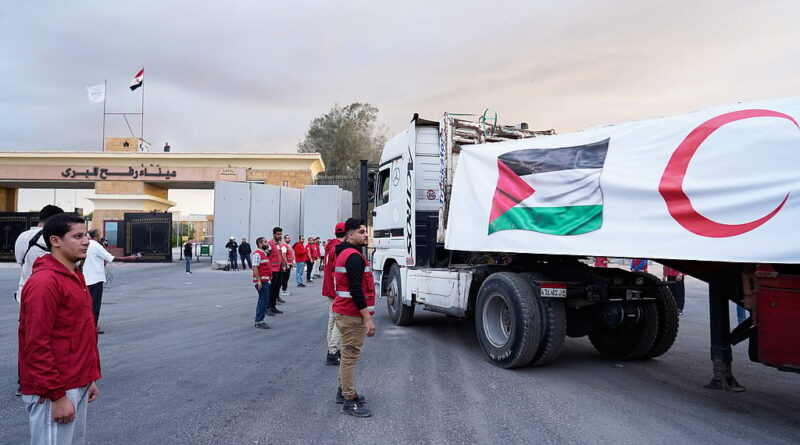Preparations begin to ramp up aid in Gaza as ceasefire brings hope for end to two-year war
The Israeli defense body in charge of humanitarian aid in Gaza, COGAT, said that the amount of aid entering Gaza Strip is expected to ramp up on Sunday to around 600 trucks per day, as stipulated in the agreement.
Egypt said it is sending 400 trucks carrying aid into Gaza Sunday. The trucks will have to be inspected by Israeli forces before being allowed in.The trucks will head to the inspection area in the Kerem Shalom crossing for screening by Israeli troops. In recent months, the UN and its partners have been able to deliver only 20% of the aid needed in Gaza because of the fighting, border closures and Israeli restrictions on what entersThe fate of the Gaza Humanitarian Foundation, an Israeli- and US-backed contractor that replaced the UN aid operation in Gaza in May as the primary food supplier in Gaza, remains unclear.
Food distribution sites operated by the group in the southernmost city of Rafah and central Gaza were dismantled following the ceasefire deal, several Palestinians said Sunday.
Hoda Goda, who used to go to the GHF sites in Rafah earlier this year, said people had dismantled the structures and taken wood and metal fences GHF workers used to control the crowds.Another Palestinian, Ehab Abu Majed, said the site in eastern Khan Younis was also dismantled, and there was no food distribution in the past two days. Ahmed al-Masri, a man living in the central Nuseirat refugee camp, said a third site in the Netzarim corridor area was also dismantled.
GHF had been touted by Israel and the United States as an alternative system to prevent Hamas from taking over aid. However, its operations were mired in chaos and hundreds of Palestinians were killed by Israeli gunfire while heading to its four sites. The Israeli military has said its troops fired warning shots to control
Another Palestinian, EhabHoda Goda, who used to go to the GHF sites in Rafah earlier this year, said people had dismantled the structures and taken wood and metal fences GHF workers used to control the crowds.
Another Palestinian, Ehab Abu Majed, said the site in eastern Khan Younis was also dismantled, and there was no food distribution in the past two days. Ahmed al-Masri, a man living in the central Nuseirat refugee camp, said a third site in the Netzarim corridor area was also dismantled.Hirsch said preparations in hospitals and in Rei’im camp were complete to receive the live hostages, while the dead will be transferred to the Institute of Forensic Medicine for identification.
An international task force will start working to locate deceased hostages who are not returned within the 72-hour period, said Hirsch. Officials have said the search for the bodies of the dead, some of whom may be buried under rubble, could take time.
Israeli officials believe about 20 of the hostages out of 48 held by Hamas and other Palestinian factions in Gaza are still alive. All of the living hostages are expected to be released Monday
GHF had been touted by Israel and the United States as an alternative system to prevent Hamas from taking over aid. However, its operations were mired in chaos and hundreds
Associated Press footage showed dozens of trucks crossing the Egyptian side of the Rafah crossing. The Egyptian Red Crescent said the trucks include medical supplies, tents, blankets, food and fuel.

